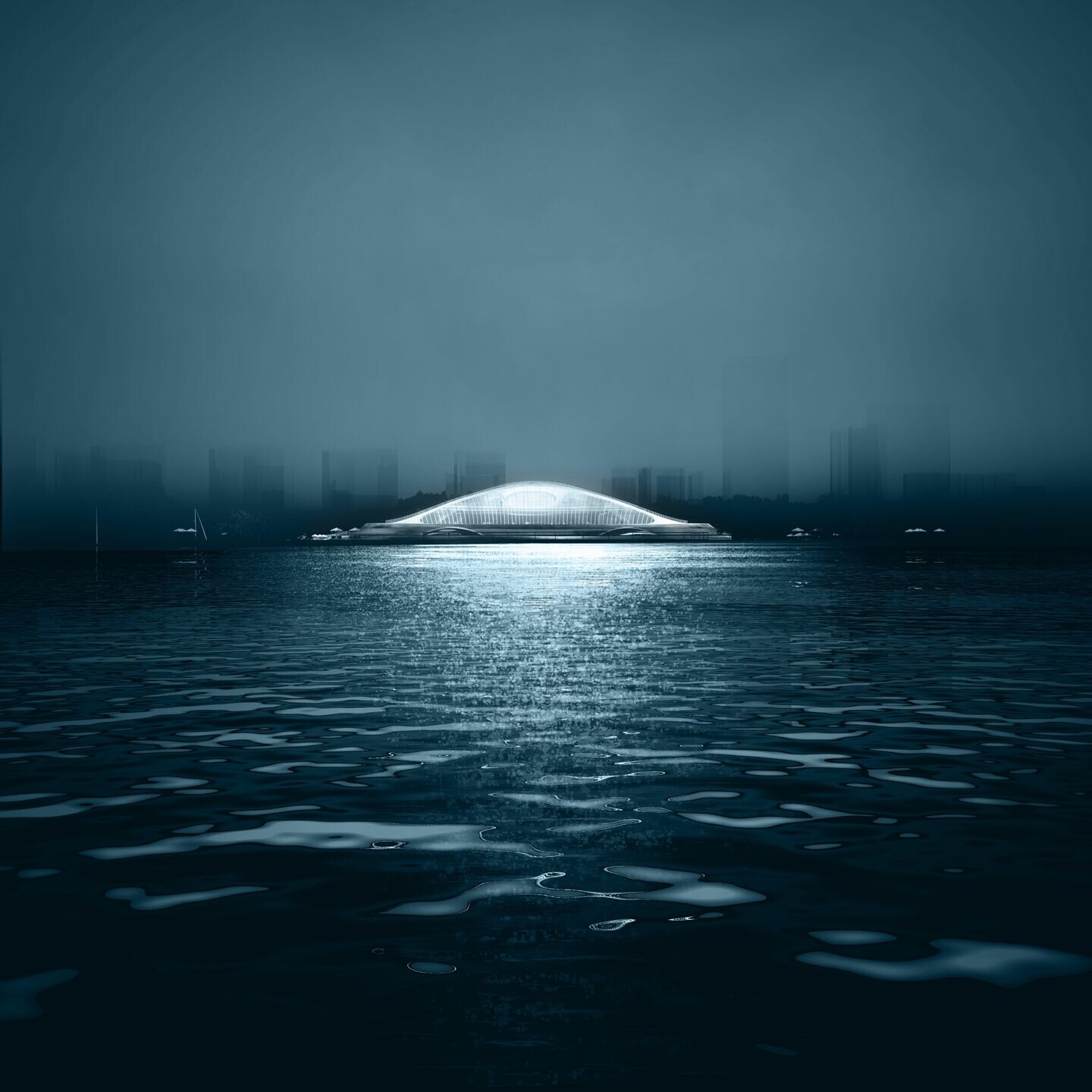Built in 1918,Weihai Port was the first commercial port in the city of Weihai, a famous coastal defense fortress in China. After almost a hundred years of changes, in 2013, the Port was moved to its new location, leaving the former site idled.
In few years, building a “refined city” and renewing the central old town have been enormously emphasized in Weihai, rendering the old port an important anchor point in this process. The design was initially started focusing on the vacant site, to sew the gap in the waterfront public space, to provide a linkage between water and land, and to highlight the city’s past and future.
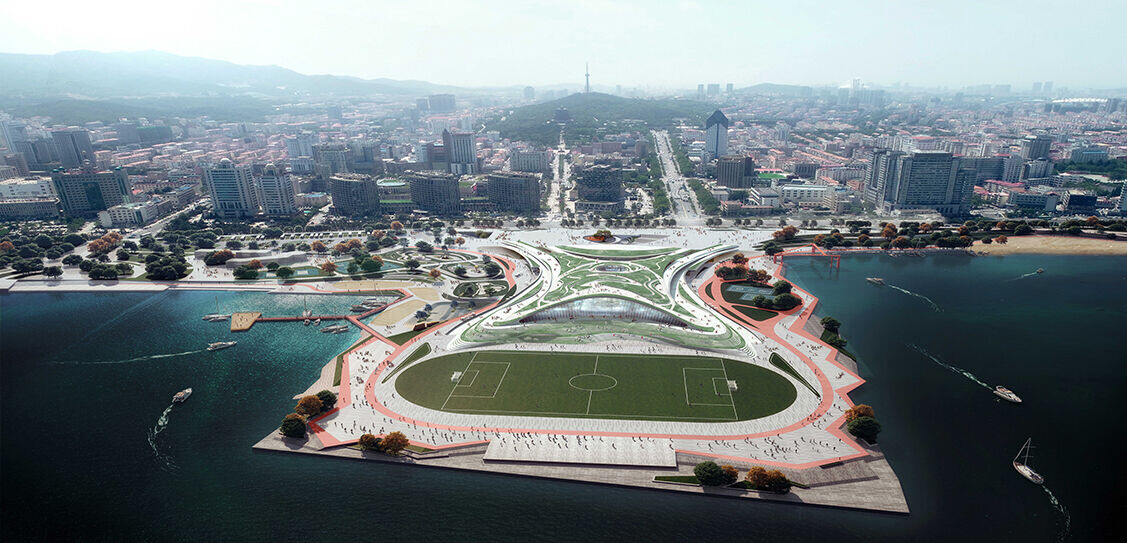
The architects adopt an unvarnished architectural strategy instead of an epical one for the purpose of joining naturally two key east-west axes from the mountain to the sea. Two parallel axes incurve within the site and then spread out towards the open sea, extending the urban life both visually and physically to the waterfront. The axes form an arch geologically,resembling a giant whale surfacing momentary above the sea, which echoes with the local legend of whale bone fossils.
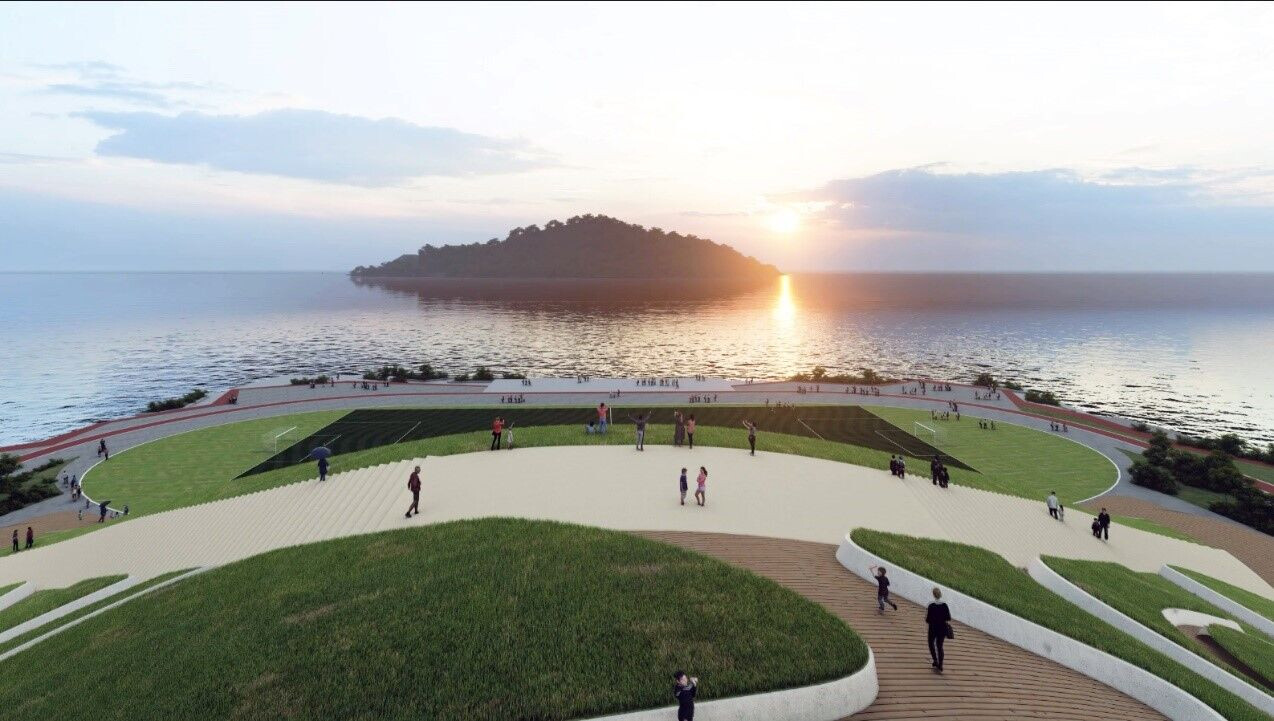
Because of coastal protection, as well as an aging population and a conservative urban planning mentality. the current waterfront stacked with black pine forests and almost greenery parks around, which space lacks vitality. The new park is intended to regenerate communication and stimulate vitality by introducing complex functions and providing a safe and comfortable public venue. Parking lot and a boutique aquarium are embedded on the first basement, and a popular science exhibition area and shopping areas are located on the ground floor. On the first floor, a kids land and a harbor view restaurant designed for families, and in the top of the complex, a public library will be opened. Inspired by the architectural techniques “borrowed scenery” and “enframed scenery” in traditional Chinese garden design, a huge curtain wall the “eye of the whale”, is placed on the east façade to incorporate the scene of the famous Liugong Island as a part of the approach to tune-up the spatial atmosphere. Adjacent to the site, there used to be a well-known “great playground”, which was encroached ruthlessly in the 1970s and now only exists deep in people’s memory. In this project, the local government has determined to restore the “great playground” which will be reopen to the public for sporting event, musical festivals, and celebrations.
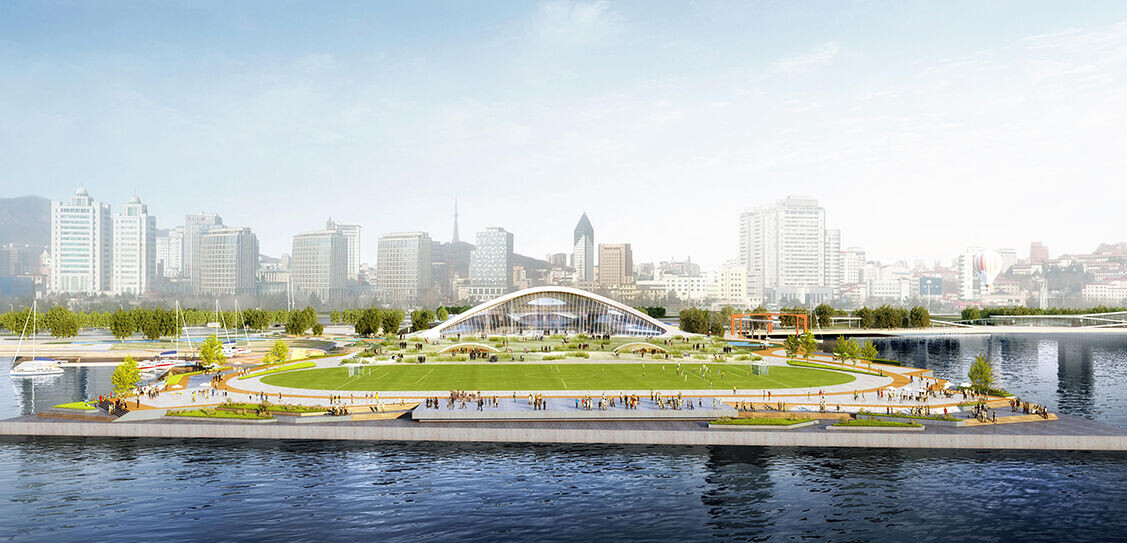
The outdoor space is woven into the urban greenway system. Multiple outdoor paths connecting the ground level with the roof, the city, and the sea, which extend the roaming space around the building and provide an enjoyable Walkability. Under the adjacent layered overhangs, on the open terraces and the Rooftop space, one can enjoy the sunshine and sea breeze like have a vacation on the deck.
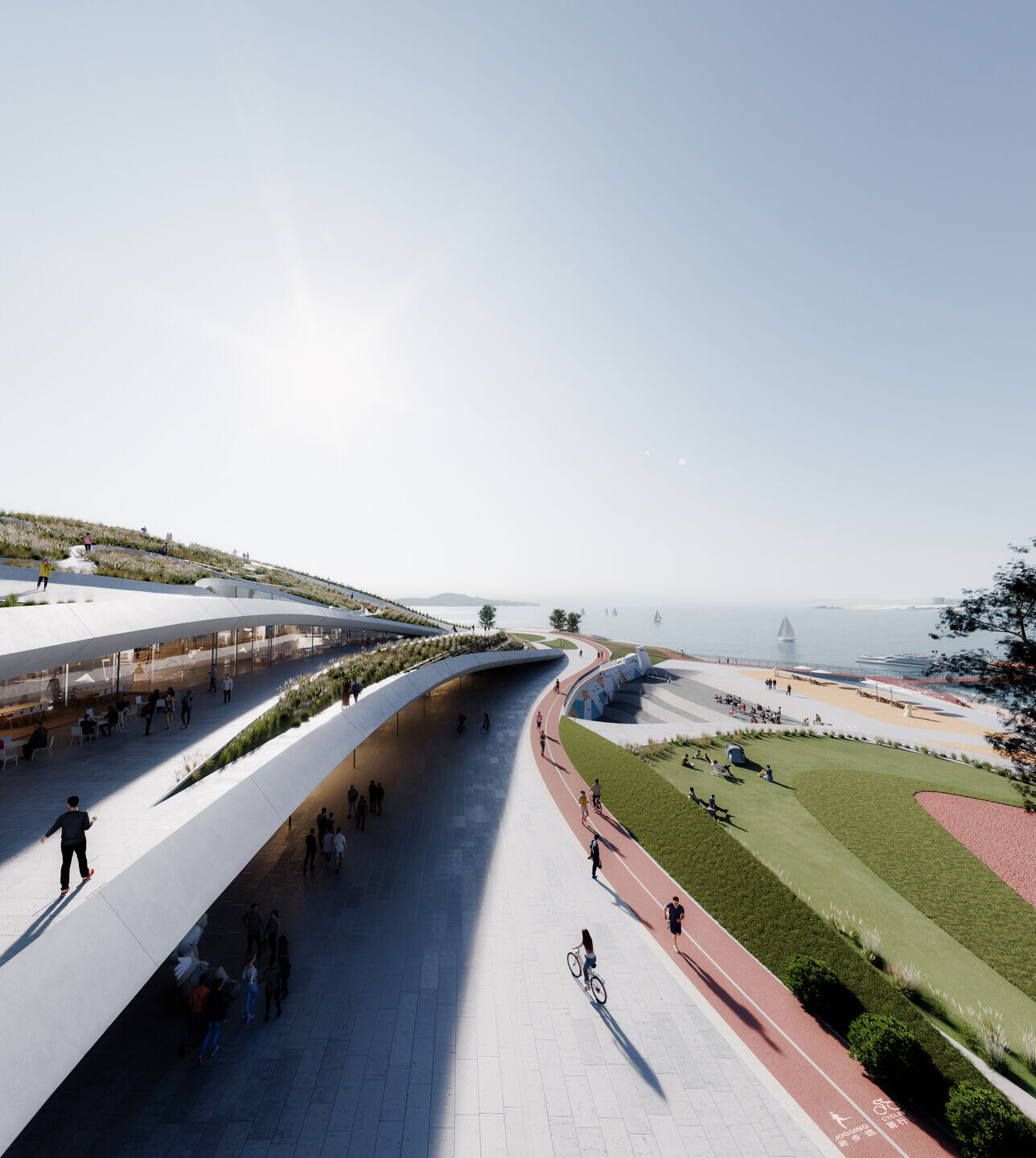
The harmonious coexistence of man and nature is another highlight of this project. Manifested in various aspects such as introducing beach plants in landscape elements, adopting a seawater heat pump system, using seawater for the aquarium and multiple resilient technical measures towards winds and waves in extreme weathers.
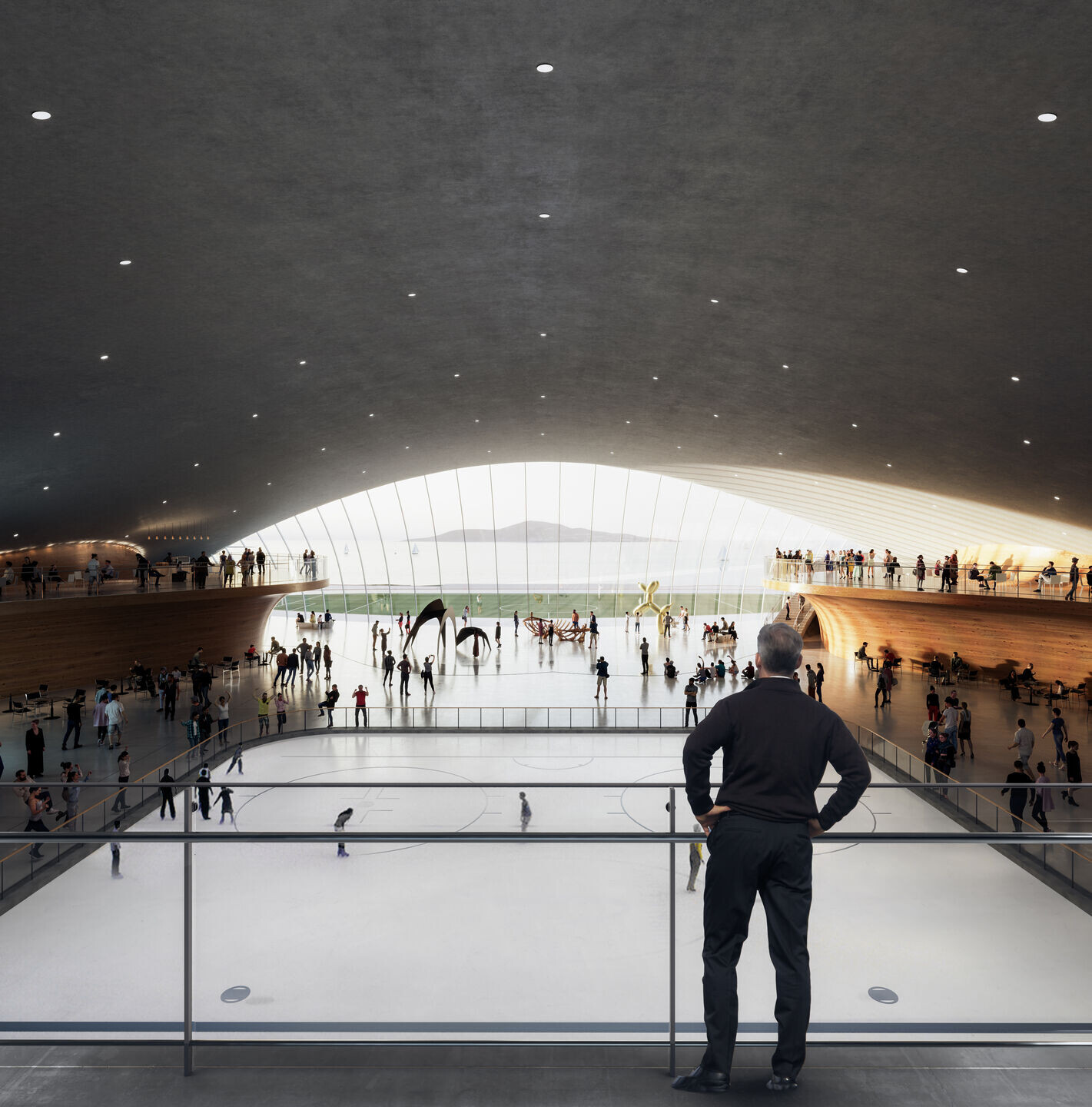
The complex will further diversify the urban environment and offer activities and experiences for all ages, enabling people to gather and spend time together. The complex will act as Weihai residents’ common living room, work space and learning environment..

THAD Team:
Project Manager: Xiaoxia Zou
Architecture: Wei Yu Qinpei Sun Qian Wang Min Cao Pengxiang Liu Xin Cong
Jingya Ye Mingwei Liu
